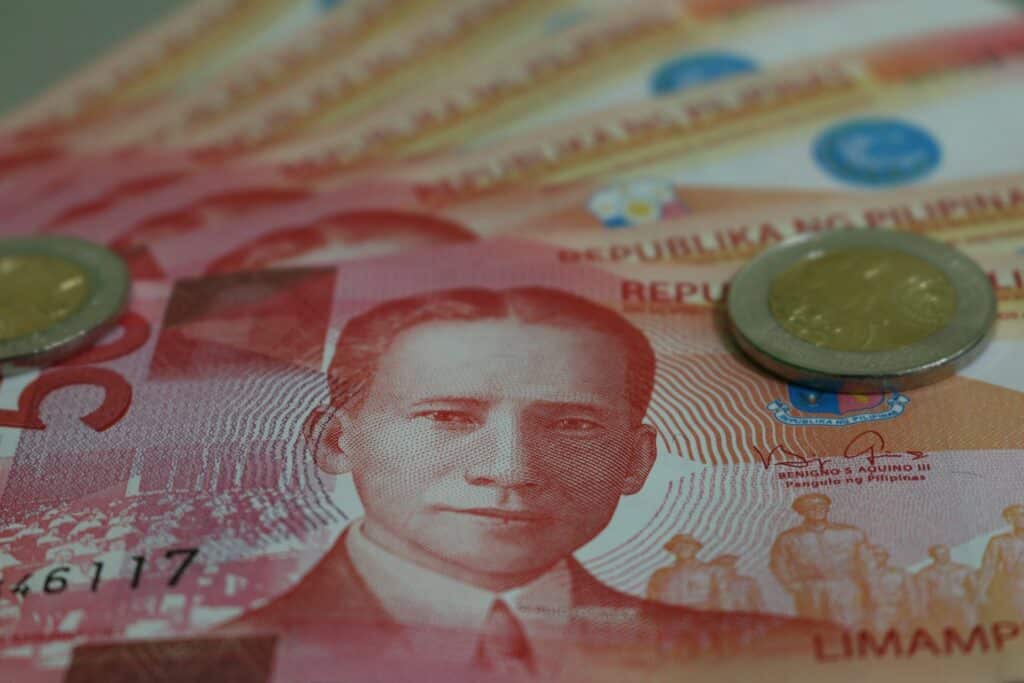If you’ve moved to a new country and are looking to financially support your loved ones back home in the Philippines, there’s no shortage of options open to you. The question is, what’s the most cost-effective way to do it? Sending money to the Philippines can potentially rack up high transfer fees, or saddle you with uncompetitive exchange rates.
This guide takes you through the various elements to consider when converting dollars, pounds, euros or any other currency into the Philippine peso. Armed with this information, you’ll hopefully be able to make a considered decision on how best to transfer money to the people you care about at home.
How to send money to the Philippines: converting to pesos
There are a couple of ways you can convert and send EUR, USD, GBP and other currencies. You can use your bank, or opt for a specialist money transfer company. Additionally, many online platforms offer competitive exchange rates and lower fees compared to traditional banks. If you need to send money to Nigeria from USA, these services can be particularly advantageous, ensuring that the recipient receives a larger sum. Exploring options such as peer-to-peer transfer services can also provide a convenient way to handle these transactions efficiently.
Bank: As it already looks after your money, it’s understandable to turn to your bank when you’re thinking about sending money to the Philippines. The biggest advantage here is sheer convenience, as you don’t have to set up an account anywhere else. However, your bank may not bring as much value for money as other options. Additionally, banks often charge higher fees and less favorable exchange rates compared to alternative services. To ensure you’re getting the best deal, consider researching and comparing rates before proceeding with your transaction. You can also check out sending money to the philippines tips to make the most of your money transfer experience.
Money transfer company: By doing some research, you may find that specialist money transfer companies give you the most ‘bang for your buck’ when you send money abroad. Online-only companies can often afford to charge lower fees and provide beneficial exchange rates, since they don’t have to cover the expense of running brick-and-mortar premises.
Using Remitly to send money to the Philippines
By using the online money transfer company Remitly to support your loved ones back home, you can take advantage of our partnerships with many of the best-known banks and financial institutions in the Philippines. These partnerships mean that remittances are always secure and straightforward.
To use Remitly, you simply need to create an account through the website or mobile app. We’ll need some standard personal details such as your name, phone number, preferred payment details. You then just enter your friend or family member’s relevant information so that the money goes to the right place. We may ask for additional documentation depending on the amount sent or if we are unable to verify your identity.
As Remitly is here to make life as easy as possible for both you and your recipients, you can choose to have the money sent in various ways. It can be transferred straight to your loved one’s bank account or mobile money account. Alternatively, the banknotes can be collected in person at your choice of pick up locations. You can even choose to have the pesos delivered to your recipient’s home, if that works best.
You can see Remitly’s latest exchange rates by looking here.

Currency exchange explained
Whenever you’re sending money to the Philippines, the exchange rate needs to be considered. This lets you know the current value of pesos compared to the currency you’re currently using in your new country. Filipinos who’ve moved to Australia, for example, will need to check the Australian dollar to Philippine peso exchange rate. If, for example, the rate is 1 AUD = 38.97 PHP, this tells you that you can, at that precise moment in time, exchange one dollar for 38.97 pesos.
Note that we say ‘precise moment in time’. That’s because exchange rates are always changing. This can be starkly obvious if you check what the dollar to peso rate was, say, a year ago compared to today. But the fact is, the rate may differ slightly from second to the next.
A range of factors can edge the exchange rate up and down. These include:
- Inflation
- Interest rates
- The balance of the Philippines’ imports and exports
- Government debt
- Political and economic stability
- Demand for the peso among currency speculators
Anything from a change in leadership to a natural disaster can affect the exchange rate in large or small ways. This is why sending the same amount of money to the Philippines can result in different sums being received by your loved ones, depending on the time of day you make the transfer.
The good news is that Filipinos can take practical steps to get the best value money transfers, without the need to pay daily attention to the activities of the Central Bank of the Philippines, or the economic policies of President Rodrigo Duterte. The important thing is to do your research into the various remittance methods available, and compare the fees and rates offered.
Sending money from the Philippines: converting PHP to another currency
Filipinos wanting to convert Philippine pesos to US dollars, Philippine pesos to Australian dollars, Philippine pesos to euros, or Philippine pesos to any other currency, can use their bank accounts or certain money transfer companies. It’s important to keep the regulations of the Central Bank of the Philippines in mind, however. Any individual may only transfer up to 50,000 pesos without requiring the official, written approval of the Central Bank.

What about exchanging PHP outside of the Philippines?
Filipinos abroad have a number of ways to convert their funds into local currency, including:
- Purchasing local money at over-the-counter currency exchanges
- Drawing cash from local banks
- Drawing cash from ATMs
- Using their debit and credit cards
Over-the-counter exchanges, commonly found at airports, train stations and in busy shopping areas, can be an easy way to obtain the currency you’re after. But the convenience of being able to simply walk up and purchase money can come with a drawback – namely, higher fees.
Similarly, while simply drawing money from ATMs or using your bank card to make payments in shops, restaurants and hotels can be very low-effort ways to purchase goods and services, the processing fees can rapidly stack up.
This is why it may be more practical and cost-effective to open a local bank account if you intend to settle in a country to work or study there for a long period. To find out more, you can check out our simple guides to opening bank accounts in the US, the UK, in France, and in Australia.
Finding the best Philippine peso exchange rate
When sending money to the Philippines, your chosen remittance service will do the exchange rate calculations automatically. Even so, it’s good to have a grasp of exactly what’s going on, so you can judge which remittance option offers the best value to you. The formula for the exchange is quite straightforward:
Send currency x Exchange Rate = Receive Amount
Let’s take a look at three hypothetical scenarios involving Philippine pesos to see how it works.
How to find Australian dollar to peso rates
Let’s imagine you’ve relocated to Australia and need to send money to a relative in the Philippines. Checking the exchange rate, you see it’s currently 1 AUD = 38.97 PHP. Using the formula above, you’ll see what 100 dollars will get you in pesos:
100 AUD x 38.97 PHP = 3,897 PHP
It’s important to note that this isn’t the amount your relative will actually receive, because you’ve yet to factor in the transfer fees. Let’s imagine the remittance service you’re using charges six dollars per transfer. This means you’ll be charged 233.82 PHP, so you’ll need to deduct this to see how much your recipient will get.
3,897 PHP – 233.82 PHP = 3663.82 PHP
At the time of writing, sending money to the Philippines from Australia using Remitly comes with a 3.99 AUD transfer fee. So, your recipient would receive more pesos this way compared to the example above.
How to find pound to peso rates
For our second example, let’s say you’ve moved to the UK and want to send 100 GBP. Based on a hypothetical exchange rate of 1 GBP = 70.45 PHP, the calculation looks like this:
100 GBP x 70.45 PHP = 7,045 PHP
Now, you just have to deduct fees – if applicable – and you’ll see what your recipient can look forward to having in pesos.
How to find US dollar to peso rates
Last, let’s see what happens if you’re in the United States and want to send 100 USD when the exchange rate is a hypothetical 1 USD = 51.50.
100 USD x 51.50 = 5,150 PHP
Again, you’ll need to take away the fees to see what the real transfer amount looks like. It’s worth noting that, as of this writing, Remitly charges no transfer fees for sending money from the US to the Philippines if you take the Economy route and your recipient receives in pesos.
Getting the best deal
As you can hopefully see from this guide, it’s very much worth your while to shop around before sending money to the Philippines. Having worked to make money in your new country, you’ll want the maximum amount to reach your loved ones with each transfer. That’s why you’ll ideally want to use a remittance service that has low, transparent fees and provides you with a fair exchange rate, whenever you decide to send funds abroad. Additionally, consider choosing a service that offers a reliable and convenient way to track your transfers, ensuring that your funds reach their destination safely and promptly. It’s also important to look for providers with positive customer reviews, as this can give you peace of mind knowing that you can send money to Cebuana safely. Doing your research will help you make informed decisions and maximize the support you provide to your family and friends back home.

